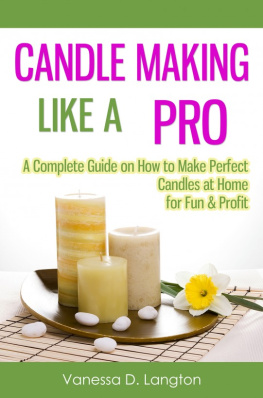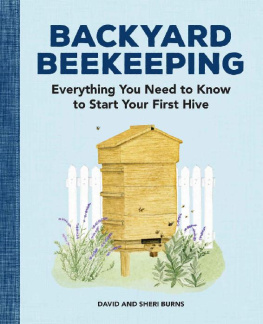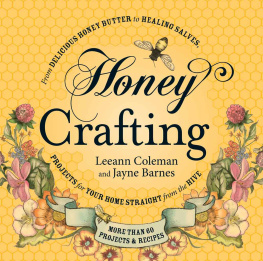
Text copyright 2017 Chris Dalziel. Photographs 2017 Chris Dalziel except as noted below. Design and concept copyright 2017 Ulysses Press and its licensors. All rights reserved. Any unauthorized duplication in whole or in part or dissemination of this edition by any means (including but not limited to photocopying, electronic devices, digital versions, and the Internet) will be prosecuted to the fullest extent of the law.
Published in the United States by:
Ulysses Press
P.O. Box 3440
Berkeley, CA 94703
www.ulyssespress.com
ISBN: 978-1-61243-650-0
Acquisitions editor: Bridget Thoreson
Project manager: Casie Vogel
Managing editor: Claire Chun
Editor: Renee Rutledge
Proofreader: Shayna Keyles
Indexer: Sayre Van Young
Cover design: Malea Clark-Nicholson
Cover photo: Eskymaks/shutterstock.com
Interior design: what!design @ whatweb.com
Interior photos: Chris Dalziel except pages 10, 15 (top) Angi Schneider/SchneiderPeeps.com, page 13 Connie Meyers, and pages 120, 193 Elliot Teskey
Distributed by Publishers Group West
IMPORTANT NOTE TO READERS: This book is independently authored and published and no sponsorship or endorsement of this book by, and no affiliation with, any trademarked brands or other products mentioned or pictured within is claimed or suggested. All trademarks that appear in this book belong to their respective owners and are used here for informational purposes only. The author and publisher encourage readers to patronize the quality brands and products pictured and mentioned in this book. Take special note of the important safety warnings throughout this book.
To my one for all time, Robin, I5005EU
Table of Contents
Guide
CONTENTS


I grew up in a traditional farm family. And by traditional, I mean there was none of that hippie organic stuff. It was the 70s, and while some people were embracing new-fangled supermarket products like yogurt and granola, my folks were having none of that.
Our family farm did sell honey from a local beekeeper, though. With white table sugar so readily available and inexpensive, natural honey was still a stretch for my moms table, but she couldnt really quibble with it. One summer day the beekeeper brought a special gift of golden yellow bee pollen for us, raving about the health benefits of this bee by-product. My mom secretly rolled her eyes.
People have been using bee pollen as a superfood for thousands of years and its touted as a source of eternal youth. As it fell out of favor, though, it became a bit of an oddity. These days we embrace scientifically developed cosmetics and supplements that promise to reduce aging, improve energy, and boost vitality. And weve been buying into it for decades.
As I was writing this, that beekeepers name came to me. Its been 30 years or more since Ive seen him, but a quick Internet search brought up his photo. Let me tell you. That bee pollen (and arguably, his alternative lifestyle that embraced bee pollen) has done wonders for his aging process. He doesnt look a day older than he did all those years ago.
Beeswax has followed a trajectory similar to that of bee pollen. Once commonly used in households, this naturally-derived product has been replaced by modern technology and chemical concoctions created in a laboratory.
Take candles, for instance. Most candles on the market these days are made of petroleum-based paraffin and scented with artificial fragrances created in a laboratory. The federal government has established regulations to ensure that the volatile organic compounds emitted from these candles are at a safe level. A beeswax candle, on the other hand, is made of beeswax, pure and simple.
Its heartening for me to see that many people are beginning to turn to more natural alternatives. Choosing to use products with simpler, gentler ingredients reduces exposure to toxic compounds in the household, and prevents those compounds from making their way into our environment. With modern ingredients like triclosan and microbeads being removed from products almost as quickly as they are added due to safety and environmental concerns, it certainly seems sensible to turn to less caustic options.
Switching to less toxic products in the home is the first step on a path toward creating a healthier environment for family and friends. Making your own common household and beauty products at home takes it a step further. Not only do handmade products remove toxins and harsh chemicals from the environment, but they reduce the amount of disposable packaging heading to the landfill, as well.
The projects and homemade products included in this book are a great starting point for consumers who are ready to try something different. Chris Dalziel offers up a huge collection of small-batch recipes that are easy enough for anyone to tackle. If you can follow instructions, you can make the products included here in less than an hour. Thats probably less time than it would take you to run to the store!
From making body products like ointments, salves, cosmetics, and lotions to creating grafting wax for the garden or waterproofing shoes or caring for leather, theres something here for everyone. Replacing your household standbys with a less toxic option is something that you can easily do, one product at a time, as you begin your journey to a more self-reliant lifestyle.
Kris Bordessa
Attainable Sustainable
Make your own. Grow your own. OWN your life.
http://candles.org/faqs


Beeswax is woven into my story. It pleasantly scents my home, gives me something useful to make for the craft markets, textures and preserves my herbal remedies, waterproofs my garden equipment, and lights my Friday nights with its sweet, golden light.
It began when my husband, two sons, and I stopped at an open-air, agritourism market because we saw the sign Planet Bee on the highway. It was impromptu. The boys were hot and restless. We all needed a break from driving. The sign promised ice cream and bathrooms.
At Planet Bee, a honey farm and shop in British Columbias Okanagan Valley, we watched as a beekeeper, dressed in a short-sleeve white shirt without any other protective clothing, pulled a frame covered in bees out of a wooden box. They flew around him on stage and crawled on his bare hands as he explained to the audience the gentle nature of bees. We didnt need to be afraid of them. He asked us not to run from them and not to swat at them if any accidentally landed on us during the demonstration. He said if a bee stung us, it would release a pheromone that would tell the other bees to come and sting us, too. However, the bees did not want to sting.
He moved slowly, deliberately, as he told us about how the bees pollinated the Okanagan fruit crop. Without the bees there would be no peaches, apples, apricots, or cherries. My youngest son, just six, watched with toothless rapture. The nine year old was eager to try the honey samples.












